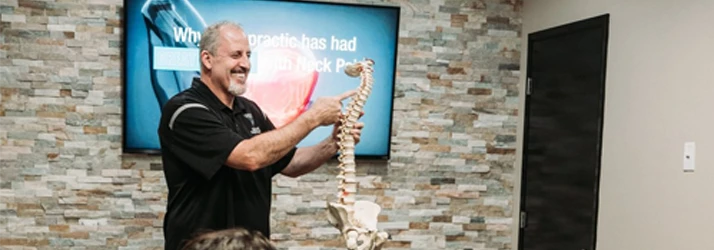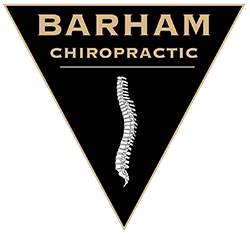15 Tips For Back Pain In Sacramento CA

Sacramento CA Chiropractor discusses lifestyle Tips to improve spine health
There are many times where people experience falls or car accidents, and that is what causes health problems of the spine. Other times, people can have serious deterioration of their spine health over time caused by an accumulation of little lifestyle decisions that are doing them harm.
Our patients (video below) often experience relief from joint pain as soon as their first visit.
Top 15 lifestyle changes that can affect your spine health
Ideally, people would not have spine pain, to begin with.
So below we decided to compile the top 15 lifestyle changes that can nurture spine and joint health.
1. Maintain a Healthy Weight
Maintaining a healthy weight is one of the most important things you can do for your spine health. Excess body weight can lead to chronic conditions like degenerative disc disease and osteoarthritis, as well as increased stress on the spine.
2. Lift Weight Properly
Many people don’t understand the basics of proper weightlifting form. This is important because lifting weights incorrectly can lead to back and neck injuries. To minimize the chance of injury, it is important to keep your back straight, utilize a full range of motion, and maintain control of the weight at all times. Additionally, it is important to use a weight that is not too heavy for your current strength level.
3. Make Exercise A Lifestyle
Making exercise a lifestyle can help you achieve and maintain optimal spine health. Regular, low-impact exercises, such as exercising in a pool, stretching, and yoga, can help loosen tight muscles, increase flexibility, and reduce the risk of injury. Additionally, strength-training exercises can help strengthen specific muscles, while aerobic exercises can help burn calories and maintain a healthy weight. With regular exercise and plenty of rest, you can maximize the benefits of a healthy, active lifestyle that leads to strong spine health.
4. Eat Your Way To Strong Spine
For optimal spine health, your diet should include foods high in calcium, magnesium, and Vitamin D, such as dairy, leafy greens, and fatty fish. Make sure to drink plenty of water too; this keeps the discs between the vertebrae hydrated.
5. Practice Good Sleep Posture
The best sleep posture for spine health is to sleep on your back with a pillow under your knees. This sleeping position takes the pressure off your spine and allows your muscles to relax. If you sleep on your stomach, you can put a pillow under your pelvis to reduce the arch in your lower back.
6. Ergonomically Correct Workspace
An ergonomically correct workspace is also important for spine health. When sitting at a desk, make sure that your chair supports your lower back and that your feet are resting flat on the floor. Your monitor should be at eye level, and you should take breaks every 20 minutes to move around and stretch your back. By following these tips, you can help reduce strain on your spine and keep it healthy.
7. Manage stress
Stress can have a negative impact on your spine health. Stress can lead to poor sleep and physical health due to decreased muscle tension, which can cause a misalignment of the spine. Reducing stress through activities such as yoga, meditation, and deep breathing can help alleviate these issues. Relaxation techniques can also help to reduce muscle tension and improve overall well-being.
8. Stay Hydrated
Staying hydrated is also an important component of spine health. Drinking plenty of water helps to lubricate and cushion the spinal discs, reducing the risk of pain and injury. Additionally, staying hydrated can help to prevent inflammation, which can lead to chronic pain and discomfort. It is recommended to drink eight glasses of water each day to maintain proper spine health.
9. Improve Your Posture
Proper posture is also essential for spine health. Good posture not only helps in maintaining balance, but it can also help maintain the natural curves of the spine. When you maintain good posture, it takes the pressure off of your spine, leading to fewer issues. It also helps prevent chronic pain from developing in the back, neck, and shoulders.
10. Sleep the right amount
In addition to exercise and posture, it’s important to get enough sleep for your spine health. It’s recommended to get seven to nine hours of sleep per night. When you’re sleeping, your body is able to heal and repair itself. This includes healing spinal tissues that may be under tension due to activities during the day.
11. Wear Appropriate Footwear
Wearing appropriate footwear is also important for spine health. Shoes that are too high or too low can cause strain on the spine, as can shoes that are too tight or too loose. Wearing shoes that fit properly and offer support can help to reduce the risk of developing spinal issues. When choosing shoes, look for shoes with a low heel, good arch support, and a comfortable fit.
12. Go on walks
Speaking of footwear, going on walks is also another excellent way to keep your spine healthy. Walking helps strengthen the muscles in the back, abdomen, and legs and can even help reduce stress on the spine. Additionally, it can help improve posture, as walking encourages the body to stand in an upright position when done correctly. Taking regular walks can help improve circulation and flexibility in the spine, both of which can help with reducing and preventing spinal issues.
13. Reevaluate Your Sitting Posture
Sitting for prolonged periods increases the pressure on the spinal column by 40%. This may lead to back pain and compression/inflammation of the spinal nerve [7].
We already discussed workplace ergonomics, but reevaluating your sitting posture can be key for your spine health. Sitting for long periods of time with incorrect posture can lead to neck and back issues. To ensure a healthy spine, sit up straight and make sure you’re not slouching in your chair. It’s also helpful to adjust your chair so that you’re not leaning forward too much or slouching down.
14. Upgrade Your Mattress
One way to improve your spine health is by upgrading your mattress. A mattress that is too soft can cause your spine to sag and put pressure on your lower back. A mattress that is too hard can also cause issues as it doesn’t provide enough support for your spine. An ideal mattress is one that is medium-firm and provides support for your natural curvature.
15. Massage Therapy
Massage therapy can also be beneficial for spine health. Massage therapy helps to relax the muscles surrounding your spine and can help alleviate pain. It can also improve flexibility and range of motion, as well as reduce inflammation and tension. Regular massage therapy can help to reduce stress on the spine, promote relaxation, and improve overall spine health.
References:
[1] Brown RA. Spinal Health: The Backbone of Chiropractic’s Identity. J Chiropr Humanit 2016;23:22–8. https://doi.org/10.1016/j.echu.2016.07.002.
[2] Gordon R, Bloxham S. A systematic review of the effects of exercise and physical activity on non-specific chronic low back pain. Health 2016;4. https://doi.org/10.3390/healthcare4020022.
[3] Price CT, Langford JR, Liporace FA. Essential Nutrients for Bone Health and a Review of their Availability in the Average North American Diet. Open Orthop J 2012;6:143–9. https://doi.org/10.2174/1874325001206010143.
[4] Schneider S, Schmitt H, Zoller S, Schiltenwolf M. Workplace stress, lifestyle and social factors as correlates of back pain: a representative study of the German working population. Int Arch Occup Environ Health 2005;78:253–69. https://doi.org/10.1007/s00420-004-0576-4.
[5] Shi Z, Zhou H, Lu L, Pan B, Wei Z, Yao X, et al. Aquatic Exercises in the Treatment of Low Back Pain: A Systematic Review of the Literature and Meta-Analysis of Eight Studies. Am J Phys Med Rehabil 2018;97.
[6] Lee J-S, Kang S-J. The effects of strength exercise and walking on lumbar function, pain level, and body composition in chronic back pain patients. J Exerc Rehabil 2016;12:463–70. https://doi.org/10.12965/jer.1632650.325.
[7] Amin RM, Andrade NS, Neuman BJ. Lumbar Disc Herniation. Curr Rev Musculoskelet Med 2017;10:507–16. https://doi.org/10.1007/s12178-017-9441-4.
Clinically reviewed by Steven Barham, D.C.
- Updated on December 1, 2022
This site is for informational and educational purposes only. The information contained herein does not constitute the rendering of insurance advice, chiropractic healthcare advice, or the provision of treatment or treatment recommendations by our providers. Browsing this site does not establish a professional relationship with Barham Chiropractic or any member of the Barham Chiropractic staff.
If you have any concerns, questions, or comments about this article please reach out to our content moderation team at:
barhamcontent@gmail.com
You can also reach out to our Sacramento CA Chiropractor Office via phone call at (916) 542-6273 during office hours.
OFFICE HOURS
Monday
7:15am - 11:45am
2:00pm - 5:45pm
Tuesday
8:00am - 11:45am
Wednesday
7:15am - 11:45am
2:00pm - 5:45pm
Thursday
8:00am - 10:45am
Friday
7:15am - 11:45am
2:00pm - 5:45pm
Saturday & Sunday
Closed
Barham Chiropractic
3441 Arden Wy
Sacramento, CA 95825




